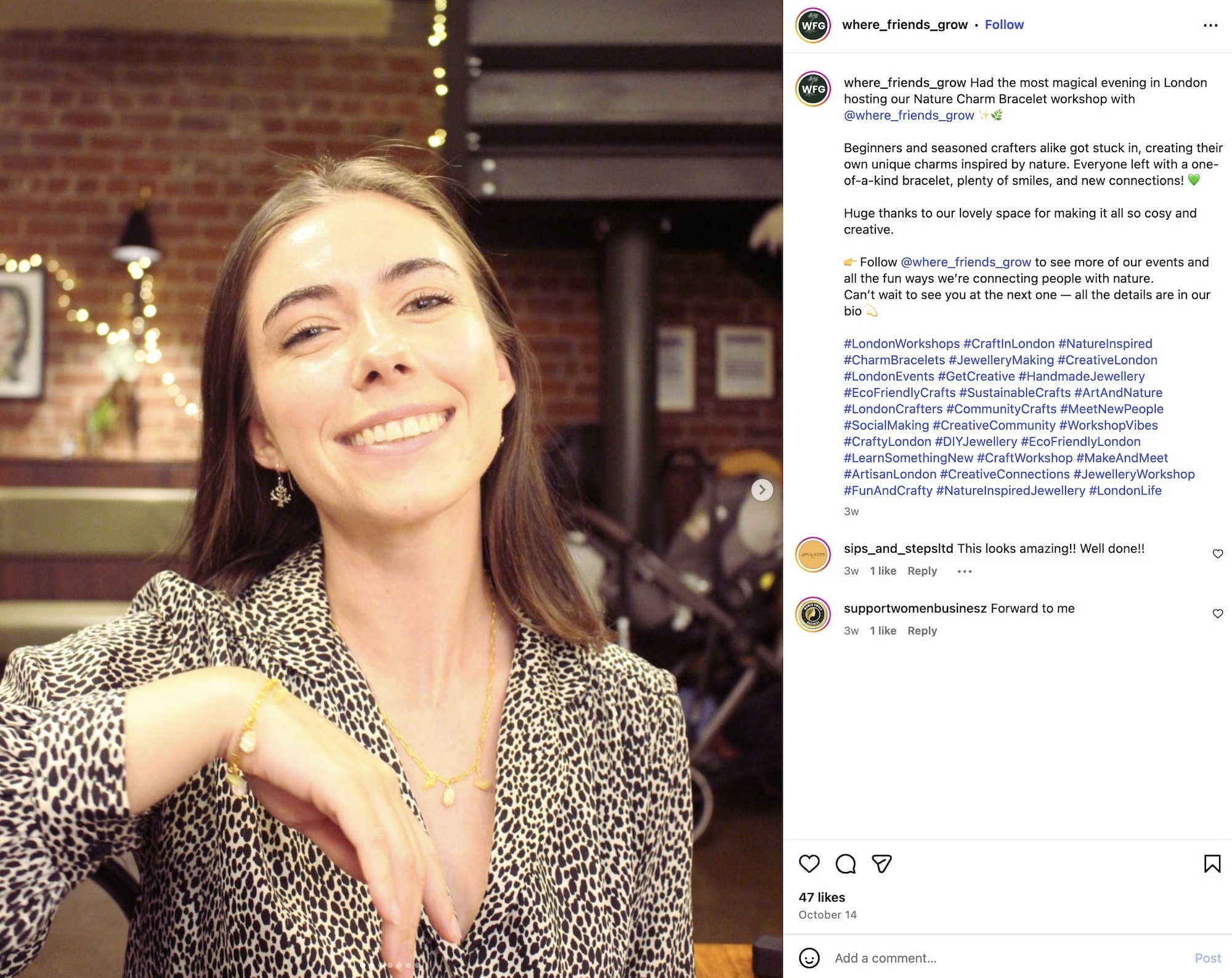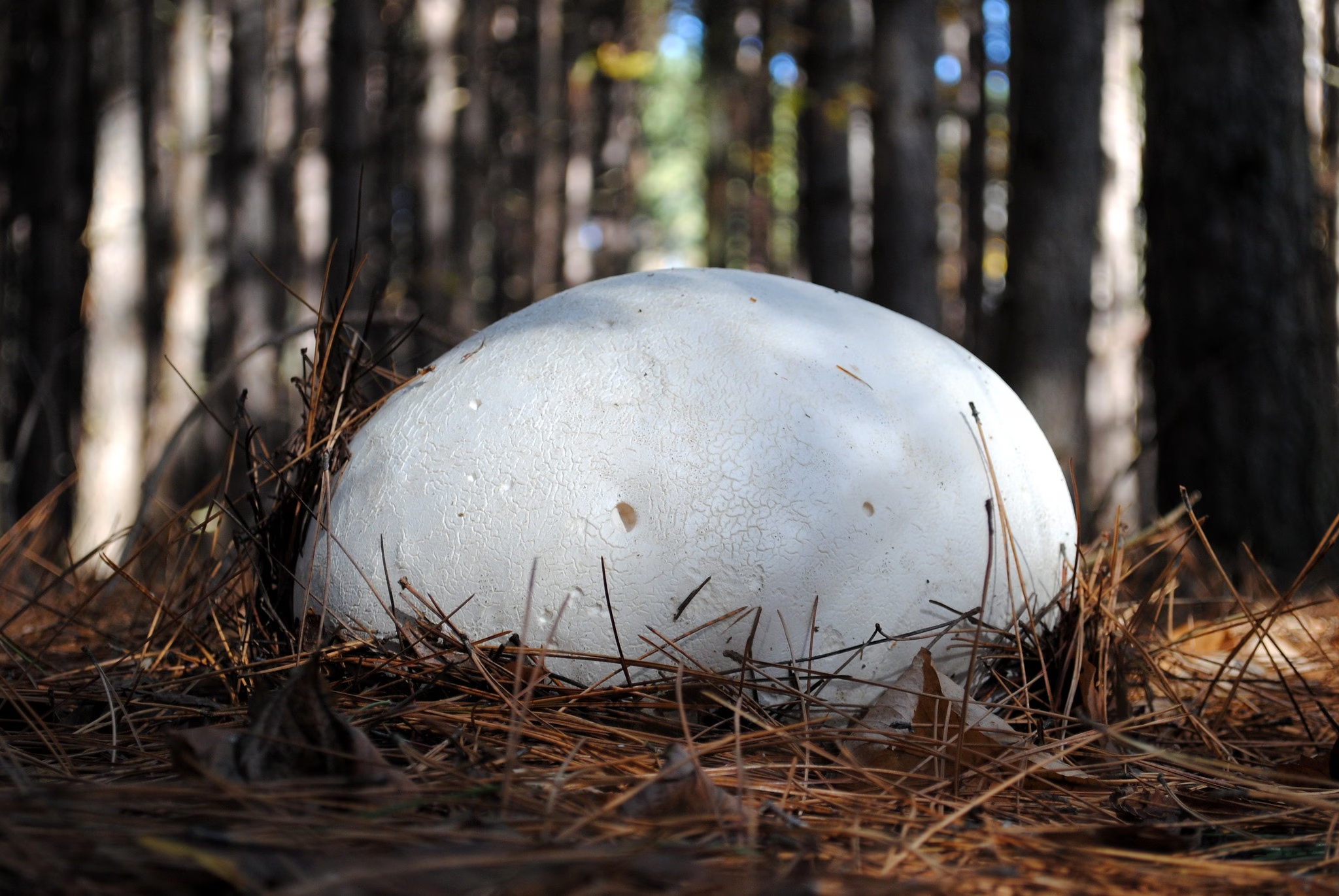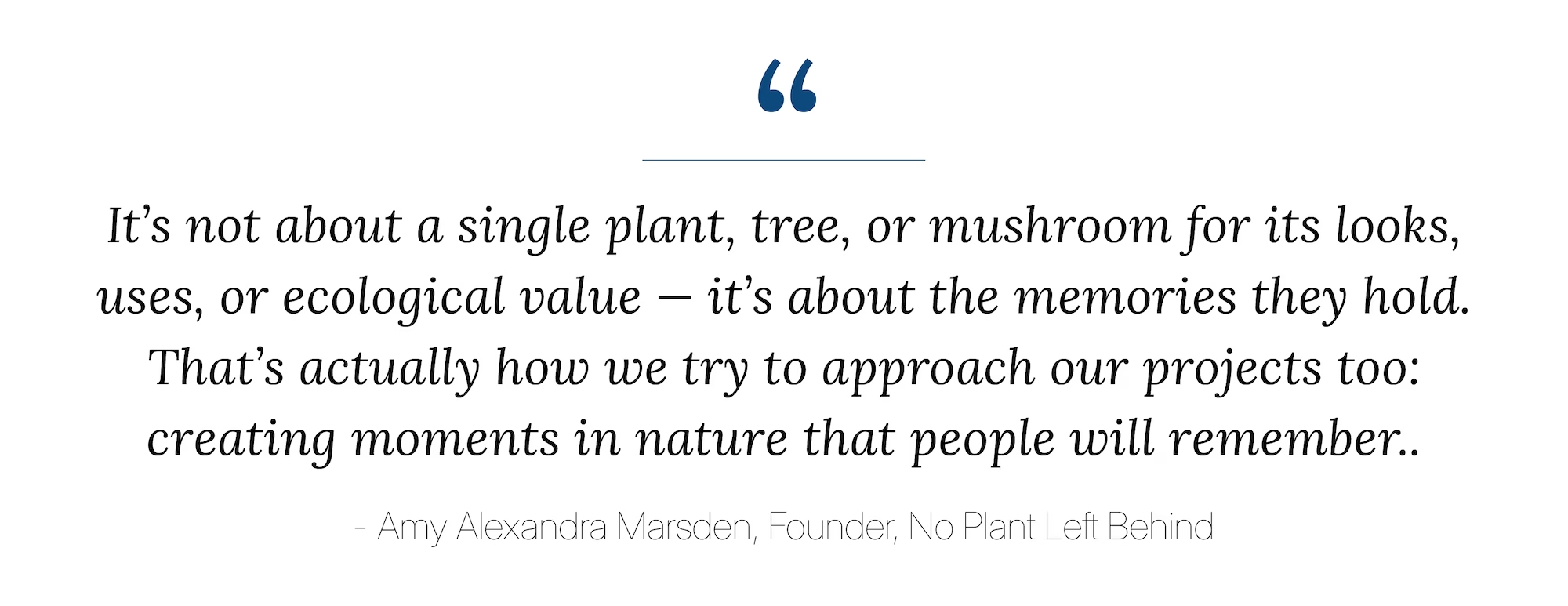How is your life going? Could it get a little wilder?
We mean in the natural sense. Could you get a little closer to nature? Is it time to approach birds instead of brands? Or fungi instead of firms? To examine the details of moss instead of highlight reels of other people’s lives?
If you said yes then it wouldn’t surprise us. Recent large-scale research says that people from many countries that visit our website, like the UK and Spain, are some of the least connected to nature in the world. Somewhat surprisingly, Spain came out as the least nature connected and the UK was also towards the bottom of the list.
Why are so many of us humans disconnected from nature? Well, today let’s focus on solutions and No Plant Left Behind’s noble mission is to rewild people’s lives – including the spaces they inhabit and pass through. So, without further ado let’s learn more from Founder Amy Marsden – and do try and go for a walk amid some foliage after reading this on a screen.
We’re aware of rewilding landscapes, and have also worked with clients in that area, but the concept of rewilding lives is new to us. How do you define that and make it happen?
I think rewilding lives is about bridging the gap between human interaction and nature. With rewilding, you restore an area of land to its natural, uncultivated state. Now, I’m not suggesting we take humans back to a time before the modern world we live in today, but rather that we bring moments of people’s lives back into spaces that restore their connection with nature — whether big or small. It’s about weaving nature back into daily life and social interactions, because for us rewilding the land is not enough. We believe that is one of the stepping stones to creating a space for nature and tackling the bigger problems such as climate change.
So what’s the origin story of No Plant Left Behind and did your background influence the concept?
No Plant Left Behind started many years ago when I was a final-year undergraduate student at the University of Sheffield. I was working on a project exploring how food waste could be used to grow new produce — a concept for a low-income community garden. I began growing all the plants myself to test what could be cultivated from food waste. The plan was to display them at the end-of-year show so people could take the plants home and grow them themselves.
Then Lockdown happened. I found that people were actually interested in the idea, so I started sharing it on Instagram. After Covid hit, I moved into the landscape architecture industry and, for a while, left No Plant Left Behind behind!

After Covid lockdowns ended I went into the industry and left No Plant Left Behind but found myself struggling with the way landscapes were often designed — based on a generalized idea of “the community,” with little understanding of individual needs, wants, or experiences. That’s when I decided to relaunch No Plant Left Behind, because I felt this needed to change. I think this background in the industry made me see the gap, I spent hours in parks and other spaces observing the uses or in a lot of cases lack of use and reasoning why people didn’t feel comfortable or want to use the spaces they had to be in nature.
Now, I use my skills as a landscape architect and as a teacher at the University of Sheffield to bring in young designers and volunteers, helping them understand the importance of listening to people’s voices in design. After all, the most successful maintenance plan — especially when there’s no money — is getting people to care.
Do you have a favourite project or event that you could let us know about – and what made it so special?
Community – City Scape was our first real project since re-launching No Plant Left Behind with a more design-focused mindset. It involved over 20 volunteers contributing to different aspects of the design, two early-career project leads, and more than 100 people taking part in volunteer days across London.
At the start, it was just me — no funding, no clear direction, and no idea how I was going to get people involved. But after speaking with the community, I realised how much the space needed care and transformation, and I was determined to make it happen.
For me, this project is so special because it marked a real turning point — both personally and for No Plant Left Behind. What began as a simple conversation with a community member grew into an oversubscribed allotment waiting list, over 20 new households gaining access to the garden, over 20 emerging designers gaining valuable experience, and more than 100 people reconnecting with nature through multiple volunteer days.
It perfectly reflects our ethos — showing that we can design meaningful spaces, but more importantly, we can inspire communities that once felt disengaged to take ownership, maintain, rewild their daily lives and truly connect with nature.
As a marketing agency, we’re curious about how word spreads about your events. How do people find out about what’s happening?
We are small we honestly do it by very low budget options we have our Instagram where we try and post what is going on, how people can get involved and really where possible try to bring people along with our journey and the experience of those coming to our events. We have a WhatsApp group chat so that everyone who is part of the community of No Plant Left Behind can stay in contact with each other and we release our events on there and word of mouth, we get a lot of people coming solo to meet new people and the next time they come they often bring someone else. We do struggle with this. Our voice is small but we do try and make it as loud as possible and I believe our voice is just as important as any huge corporation that has unlimited funds for marketing.
 Your mission highlights ‘youth-led change’. Why is that so important to what you do?
Your mission highlights ‘youth-led change’. Why is that so important to what you do?
We believe that genuine, lasting change comes from empowering young people to lead it. Too often, early-career individuals are overlooked, even though they bring fresh perspectives and a strong desire to learn and grow. If we don’t create opportunities for them to gain real, hands-on experience, they miss out on developing the skills and confidence that come from active involvement.
While it might be easier to bring in seasoned professionals to manage projects with minimal guidance, that approach doesn’t build the next generation of leaders. By involving youth at every stage, we ensure they not only contribute meaningfully but also carry forward our values of collaboration, creativity, and inclusive design into their studies, their future work, and their communities. Every project becomes a learning moment — and that’s exactly why we do what we do.
We suppose this must be really difficult to achieve, if at all, but how do you measure the impact you’re making, and figure out ways to get even wilder?
It’s definitely challenging, but it’s something we’re actively working on. With our upcoming projects, we’re putting a stronger focus on collecting data and tracking development as things progress. From our last project, we were able to measure tangible outcomes — like the increase in household and allotment plots — but we also know, through conversations with the community, that there’s much more diversity and impact beneath those numbers.
At the time, we were still learning and didn’t want people to feel like they were part of an experiment, so we kept things quite light on formal measurement. Now, with what we’ve learned, we’re ready to take it further. We want to gather evidence that reflects not just growth in numbers, but growth in confidence, skills, and connection — to prove that the difference we feel we’re making is one we can show.
You must face some challenges getting folk closer to nature. What is the single biggest challenge you face in getting people to adopt “everyday acts of sustainability” and make a success of your events?
Our biggest challenge isn’t really getting people interested in nature — it’s understanding the different ways people want to connect with it. Most people aren’t opposed to engaging with nature, but not everyone wants to hike, garden, or do what’s traditionally seen as “outdoorsy.” That’s where we have to be thoughtful. The language and activities we use can unintentionally speak to only one demographic, leaving others out.
For example, before we got involved in one community city space, it was a kitchen garden. That approach worked for a few households who loved gardening, but it didn’t appeal to everyone. After adding spaces for socialising, seating areas, events, and wildflowers, we saw participation grow from just 2 households to over 20. It wasn’t that gardening wasn’t valuable — it just reached a limited audience.
When it comes to everyday acts of sustainability, we focus on making them part of people’s natural routines. Through our clubs and projects, sustainability becomes something people live rather than something they have to plan. Our events are designed around community connection — and that’s where the real, lasting change happens.
As a Community Interest Company (CIC), how is No Plant Left Behind funded? What is your strategy for the long-term financial sustainability of your projects?
At the moment, most of our funding comes from within — through the events and activities we run. For example, our Where Friends Grow club includes some paid sessions that help sustain the club itself. While we’re always open to sponsorships and external support, we believe that every project should be able to stand on its own when funding isn’t available.

Our long-term financial strategy is centred around self-sufficiency. We want every project we run to have a sustainable model so it can continue making an impact long after initial funding ends. Too often, community projects stop as soon as the funding does — and we’re determined to break that cycle. Especially with Where Friends Grow, our focus is on building something lasting: a self-supporting community that can continue to grow and thrive independently.
Up to now, we’ve largely funded our own projects through hard work and community-driven fundraising. As we expand and take on larger initiatives, we’re looking to strengthen this approach by exploring sponsorships and grant opportunities — helping us scale our impact while staying true to our values of community ownership and long-term growth.
One of the frustrating things about sustainability is that it can become a bit fancy. With No Plant Left Behind, there seems to be a focus on affordability and making what you do accessible to everyone. Is that a conscious part of your approach?
Absolutely — it’s a very conscious part of what we do. Every project we run is designed to be both accessible and affordable. We might be a small organisation, but we don’t see that as a limitation — we see it as a strength. We want to show that meaningful sustainability doesn’t have to rely on big budgets or large-scale funding.
Nature doesn’t need million-pound projects to be restored — it can happen right on our doorsteps, often for free or at very little cost. That’s the message we try to share through everything we do. If we can demonstrate models that other communities or organisations can easily replicate without heavy financial reliance, then we’re making a real impact.
Sustainability has, unfortunately, become a bit of a buzzword. We see lots of large-scale, one-off actions that look impressive but don’t always lead to long-term change. Our focus is on showing that small, consistent, community-led actions — the kind anyone can take — can be just as powerful, and far more lasting.
One of our biggest strengths as a small organisation is adaptability. We can move quickly, respond to ideas in real time, and take the time to truly listen to our communities. Because we’re not tied up in layers of approvals or lengthy decision-making processes, we’re able to start new projects and collaborations much faster.
Being small also allows us to stay grounded and personally connected to every project we run. We know the people involved — from community members to young professionals — and that connection keeps our work authentic and responsive. It also means we can easily welcome new, early-career professionals into what we do, giving them meaningful opportunities to contribute and learn.
Of all the flora, fauna (and funga) in the UK and beyond – do you have a favourite that more people should know about and connect with? Or a few favourites?
For me, it’s not about a single plant, tree, or mushroom for its looks, uses, or ecological value — it’s about the memories they hold. That’s actually how we try to approach our projects too: creating moments in nature that people will remember.
Personally, I love the puffball mushroom because it reminds me of foraging trips with my grandad. The Prunus surrula (cherry) is my favourite tree because it was the first one I really learned about at university — its name, its properties, and its significance. Tomatoes hold a special place because they were part of the very first project we launched. Pine trees also remind me of our community garden: one member from Italy brought a pine back, and now in the heart of London there’s a tree people can take leaves from and make tea.
For me, every favourite plant of mine carries a memory.

An excellent choice – a Giant Puffball is incredible to behold! Sustainability can be a tricky concept to pin down but we always ask our interviewees to make an attempt. How would you define ‘sustainability’?
To me, sustainability is about how we live and the choices we make every day. It starts with small, individual actions — like choosing bananas without plastic wrapping — that collectively make a difference. Sustainability isn’t just a big idea; it’s rooted in the daily decisions each of us takes to care for the environment and the world around us.
Could you tell us about some of the most exciting sustainable projects that you admire in the rewilding sphere or otherwise?
As a landscape architect, I find myself inspired by so many projects, but one that really stands out is the Grey to Green scheme led by Nigel Dunnett. Nigel was a professor of mine, and I now work with him teaching, so I’ve seen firsthand how he pushes the boundaries of what people expect from landscapes.

For me, this project epitomises sustainability. It’s over 10 years old and still looks incredible — something many landscaping projects can’t claim. Beyond aesthetics, it continues to function as a sustainable drainage system, and people still visit, admire, and use the space. It’s a brilliant example of a project that is both environmentally effective and genuinely loved by the community.
Where to next for No Plant Left Behind, over the next year or so? Are you exploring new materials, collaborations, or formats you can give us a sneak preview of?
Over the next year, we’re expanding our scope, taking on more projects, and embedding our mission and values into everything we do. We’re also excited about collaborating with other organisations that are doing incredible work alongside us. While we can’t reveal too much just yet, there’s plenty to look forward to in the new year.
Interested in getting closer to nature? Why wouldn’t you be! Take an urgent, relaxing stroll to No Plant Left Behind’s website or Where Friends Grow’s Instagram.

 Your mission highlights ‘youth-led change’. Why is that so important to what you do?
Your mission highlights ‘youth-led change’. Why is that so important to what you do?

Leave a Reply